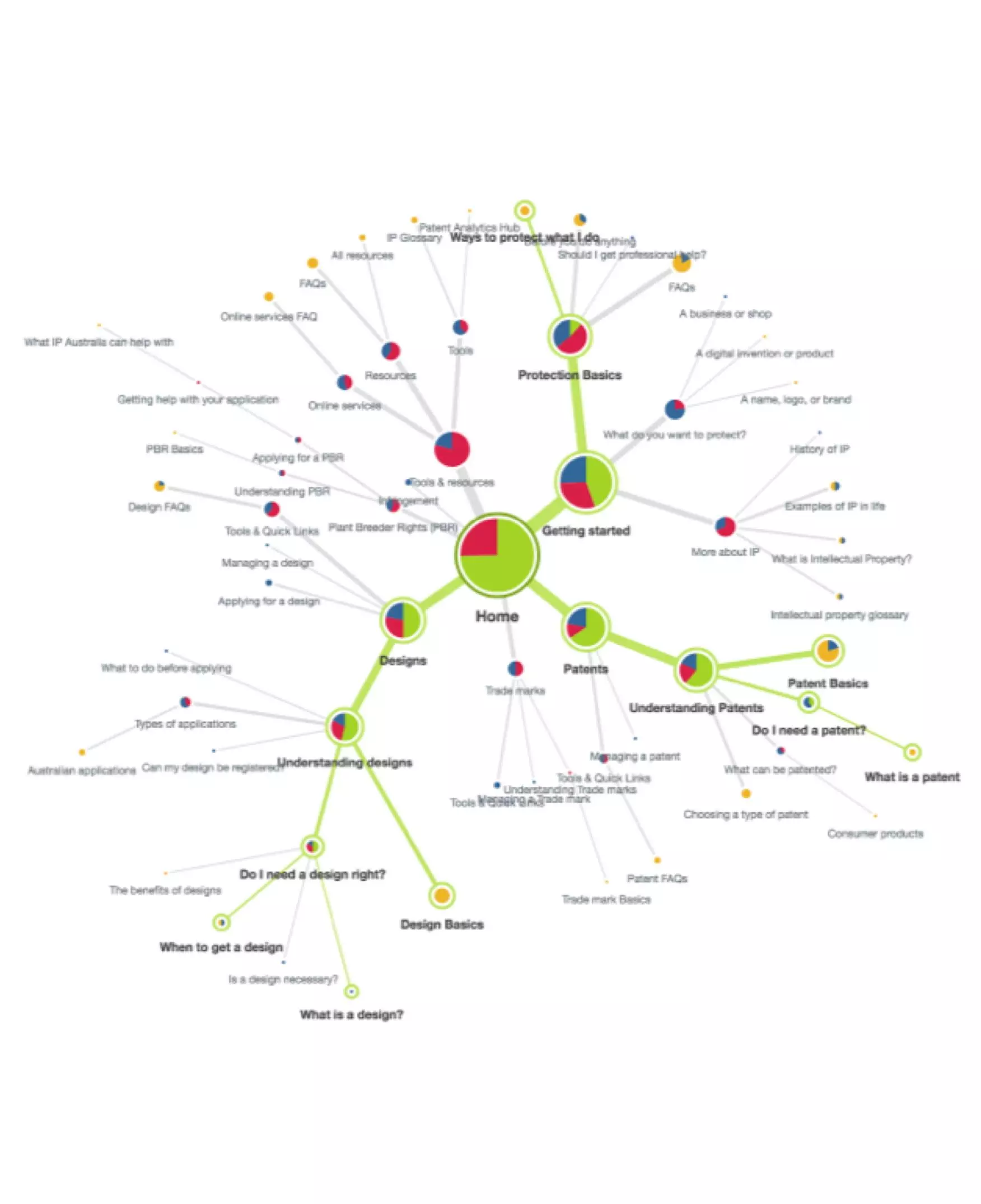Tree testing measures how easily users are able to find pages in your information architecture. The ‘tree’ in tree testing refers to the structure of the information architecture, represented as a hierarchy of menu labels. A series of tasks are presented to the user asking them to select in the tree which page they think answers the task. The pathways the user took are all recorded and provide a rich dataset to analyse the effectiveness of the IA.
Digital Garden uses Optimal Workshop to run its tree tests. This tool allows us to import a spreadsheet of the IA and assign tasks to the different labels. The tool then generates a web link that is sent out to participants to complete. Once the tree test is closed, analysis is performed on the data to understand the pathways users took. By looking at the data, we can understand which labels didn’t perform well and which areas in the IA users got trapped. This allows us to make revisions to the IA so that it matches users' mental model and expectations.
Tree testing is a fast way to analyse and validate an IA as it does not require moderated sessions. It provides us with rich, objective data that ensures the basic structure of the website is sound and provides a good base to build the design onto.
Digital Garden provides a report outlining the analysis of results from tree testing. The report contains information about what worked well and what didn’t, making suggestions on what to change. The report is supported by visual representations of the user journeys that make the data easy to understand and share.


